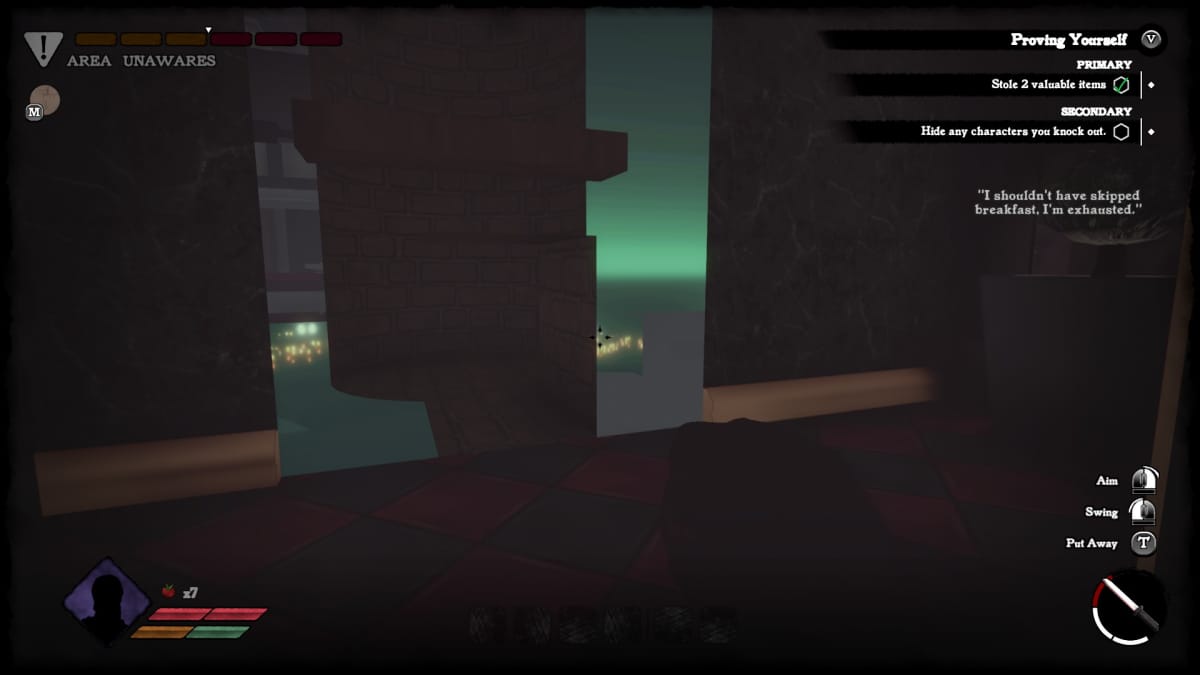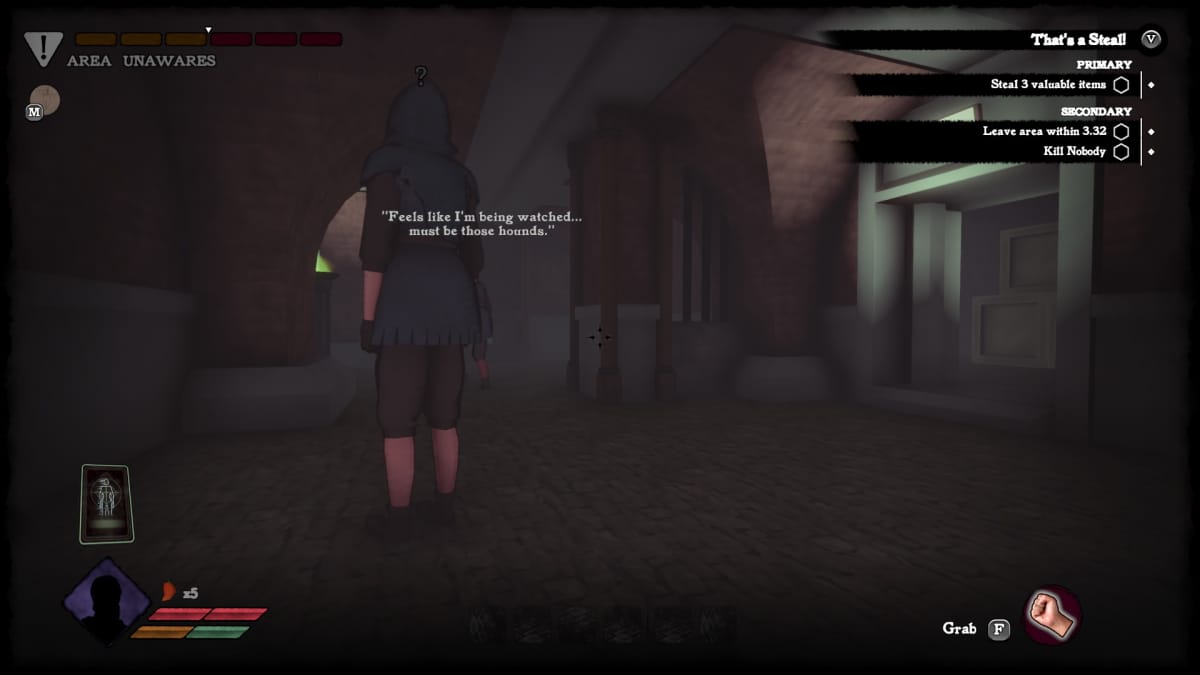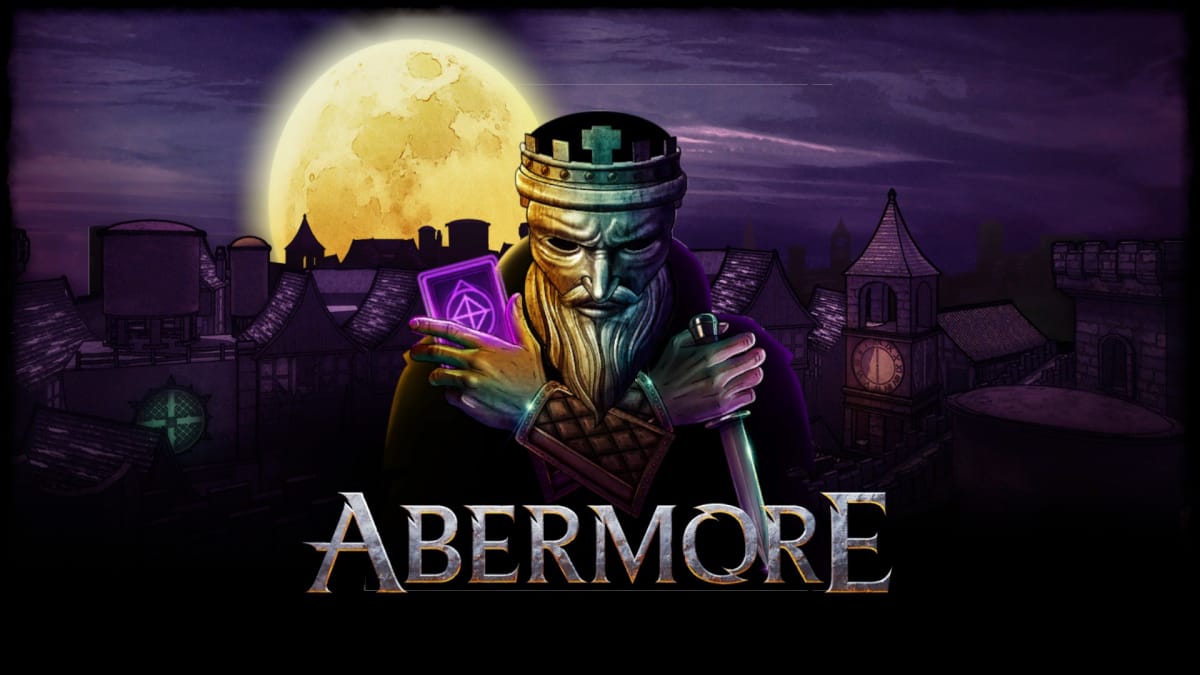First-person stealth games were a rare site not so long ago. Back in the days of the first two Thief games, the genre was very much appreciated by its niche audience, but it wasn’t until the era of Dishonored that these sorts of titles approached mainstream appeal. Once again, it’s been a while since we last saw a decent first-person stealth game, so along comes Abermore to try and fill that void with as much light/darkness-based stealthing and procedural generation as you can handle. Oh, and bugs. Lots and lots of bugs.
Abermore comes to us from Four Circle Interactive, an indie team behind previous action-platformer 10 Second Ninja which featured a ninja killing nazi-robots from the moon in 10-second increments. Quite a leap to a full-3D first-person stealth game, but an even bigger leap in tone from a goofy game about space-nazi robots, to a light fantasy world that tries to take itself a bit more seriously, but doesn’t 100% pull it off.
The game starts out and you’re a smuggler who has been paid to take a letter to someone aboard a boat. You meet a mysterious character who is some famous, masked thief, and they rope you into taking part in their heist in the titular city of Abermore. You have 17 days to bankrupt the entire city before taking on a major heist planned by the famous thief. Along the way, you’ll spend your time proving you can hide in dark spaces better than anyone else.

The gameplay in Abermore is a bit more broken up than it needed to be. Each mission is self-contained, typically giving you a time limit to complete certain objectives and bonus objectives to get a high rank and earn lots of money. The missions are usually really short, and the procedurally generated levels are typically small enclosed maps with no sense of cohesion. You do visit a hub world between each level where you can speak to NPCs, buy and sell upgrades and loot, and arrange your next mission, but even this feels pretty claustrophobic and dead more than a living breathing world.
Bar far the biggest problems come from the bugs. The game is utterly riddled with them, mostly thanks to the not-so-fancy procedural generation used for the levels. Certain areas are missing textures depending on how you look at them, there are invisible objects that block you from moving around properly, and enemies and objects can seemingly float in the air. You also have inventory spaces that occasionally delete items that you’ve collected if you try and pick up too much stuff.
The actual gameplay of Abermore is competent enough in terms of controls and mechanics. You can’t be seen if your character portrait is a silhouette, but you can be when the environment lights it up. You can craft locks picks and other tools like sleep darts to deal with NPCs and have to learn the guards' patterns to find the best routes to loot and back out of the level again. Of course, even this is not without its flaws. The ‘can’t be seen in the dark’ thing is taken incredibly literally, to the point that you can walk right past NPCs as long as you’re in the dark.

The other direct gameplay issue comes more from the concept as a whole rather than the execution. Half of the fun of a stealth game like this is playing the levels over and over again to learn the layouts so you can master sneaking through them as quickly and as quietly as possible. With procedurally generated levels, there’s no opportunity to learn the maps, so each time you play the game you’re having to figure out how the AI has constructed the 50th version of this vaguely medieval fantasy house.
Speaking of aesthetics, these too are mostly competent, if a bit reminiscent of old-school Runescape. It’s nothing to write home about, but it works, even if the level generation does end up leaving everything looking like a confusing mess anyway. In many ways, it feels like the style is a little bit let down by being used in AI-based level design. In the properly designed overworld, it works much better and is a nice change of pace from either retro-style graphics or realism.
At the end of the day, Abermore is a simple concept that had a lot of potential but has been completely let down by the execution. It’s ridden with so many bugs that it’s legitimately difficult to keep playing most of the time. The lack of personal from characters or any really interesting hooks in the story leaves the entire experience feeling like a bit of a chore. Even hardcore stealth enthusiasts will struggle to wring much fun out of this in the end.
TechRaptor reviewed Abermore on PC using a copy provided by the publisher.
Review Summary
Pros
- Stealth technically works
Cons
- So buggy it's practically unplayable
- Parts of the levels keep warping out of existence
- Levels are confusingly laid out and have random NPC placement
Have a tip, or want to point out something we missed? Leave a Comment or e-mail us at tips@techraptor.net








